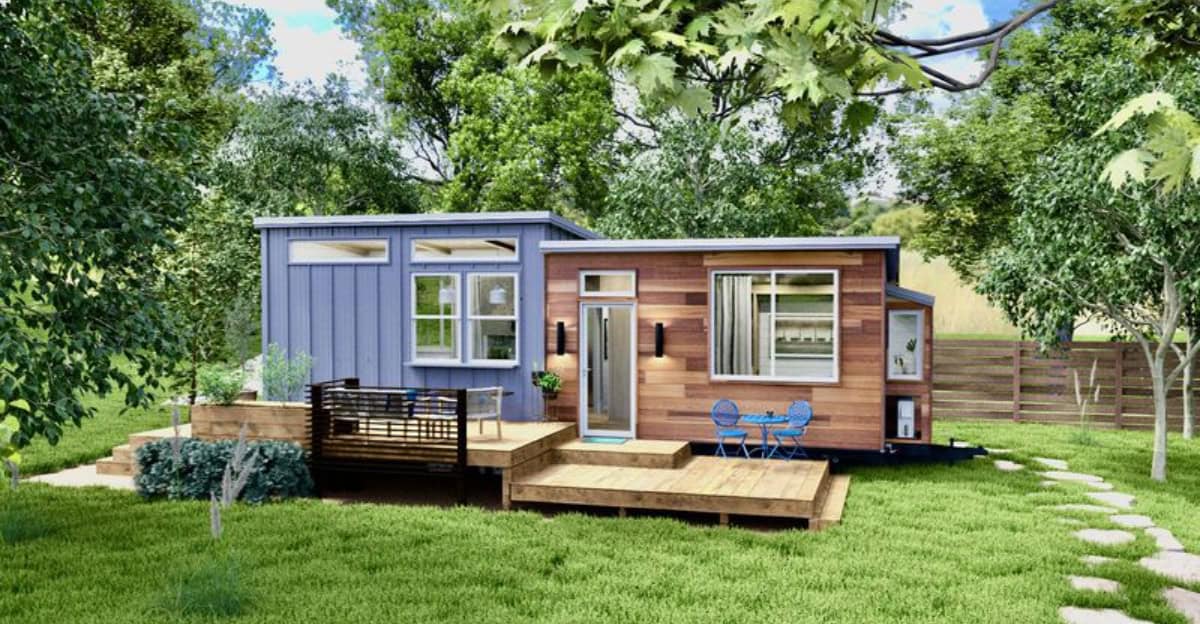Tiny homes have captured the imagination of many, representing a shift in lifestyle that emphasizes minimalism, sustainability, and financial freedom.
But are they a practical solution to modern living, or just a fleeting trend? In this article, we’ll explore 10 intriguing aspects of tiny homes and their impact on daily life.
1. Size Does Matter

Tiny homes challenge the conventional notion of living space by squeezing all the essentials into a compact area, often under 400 square feet. This forces owners to be creative with storage and furniture.
The clever use of multifunctional furniture, such as convertible sofas and wall-mounted desks, can transform limited space into a comfortable abode.
Minimalism plays a key role, encouraging residents to prioritize possessions and focus on essentials.
Living in such a condensed area requires adaptability, but for many, it brings a refreshing simplicity to life.
2. Environmental Impact

Tiny homes offer a greener living alternative, often designed with sustainability in mind. They require fewer building materials and less energy to maintain, reducing the carbon footprint.
Solar panels are a common feature, providing renewable energy and enhancing self-sufficiency. Water conservation is equally important, with rainwater collection systems often in place.
The smaller size encourages less consumption, aligning with eco-conscious living. Adopting a tiny home not only supports environmental goals but also cultivates a sense of responsibility towards nature.
3. Financial Freedom

Living in a tiny home can significantly reduce expenses, offering a path to financial freedom.
With lower mortgage payments, utility bills, and maintenance costs, homeowners can save money or work fewer hours.
This financial relief extends to the opportunity for travel or investment in other life experiences.
The affordability of tiny homes makes them an appealing choice for both young professionals and retirees seeking a simpler, stress-free lifestyle.
Financial independence is more attainable, allowing for personal growth and exploration.
4. Community Living

Tiny home communities are springing up, offering a unique blend of independence and social engagement. These neighborhoods foster a sense of belonging, with shared gardens, workshops, and social events.
Residents find companionship and support, often collaborating on sustainability projects or communal cooking.
The close-knit environment encourages interactions that may be missing in traditional neighborhoods.
Embracing community living adds richness to the tiny home experience, enabling friendship and cooperation.
5. Mobility and Freedom

Tiny homes on wheels offer unparalleled mobility, allowing owners to explore different locations without leaving home behind.
This flexibility appeals to adventure seekers and those wanting a change of scenery.
The ability to move means adapting to different climates and discovering new cultures, all while maintaining the comfort of one’s own space.
Mobility enhances the sense of freedom and breaks the monotony of stationary living, providing endless possibilities for exploration.
6. Challenges of Downsizing

Downsizing to a tiny home presents challenges that require emotional and practical adjustments. Letting go of possessions and prioritizing what’s truly important can be daunting.
The process demands reflection on lifestyle choices and a willingness to embrace change.
While the transition may be difficult, it often leads to personal growth, clarity, and a newfound appreciation for simplicity.
Facing these challenges head-on can transform one’s outlook on life and create a more intentional way of living.
7. Design Innovation

Tiny homes are a playground for design innovation, with architects pushing the boundaries of creativity. Clever layouts maximize every inch, with lofted sleeping areas and hidden storage solutions.
The challenge lies in balancing aesthetics with functionality, crafting spaces that are both beautiful and practical.
Innovative designs cater to individual needs, be it a home office or a cozy reading nook.
This creativity transforms tiny homes into personalized sanctuaries, reflecting the unique preferences and lifestyles of their inhabitants.
8. Adapting to Minimalism

Embracing minimalism is a core aspect of tiny home living. It requires a shift in mindset, focusing on quality rather than quantity.
The minimalist approach encourages individuals to reduce clutter and embrace a more intentional lifestyle.
Stripping away excess fosters a sense of freedom and mindfulness, allowing space for personal reflection and growth.
Adapting to minimalism can lead to deeper satisfaction and a more meaningful way of living.
9. Innovative Storage Solutions

Storage becomes an art form in tiny homes, with innovative solutions that make the most of limited space. Built-in shelves, under-floor compartments, and fold-away furniture are common features.
These solutions require strategic planning and creativity, enabling homeowners to maintain organization without sacrificing style.
The emphasis on efficiency transforms everyday living, allowing residents to focus on what truly matters.
By embracing innovative storage, tiny home dwellers can enjoy a clutter-free environment that enhances functionality and comfort.
10. Is It a Trend?

The popularity of tiny homes has surged, but questions remain about their longevity. Are they a genuine lifestyle change or merely a passing fad?
The movement’s emphasis on sustainability and simplicity resonates with modern values, yet challenges like zoning laws and social acceptance persist.
While some see tiny homes as a temporary solution, others embrace them as a permanent shift towards mindful living.
Only time will reveal if this trend will endure, but for now, tiny homes continue to captivate those seeking a different way of life.

